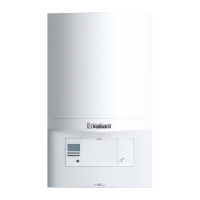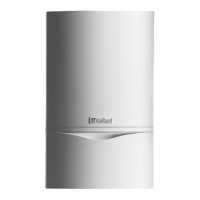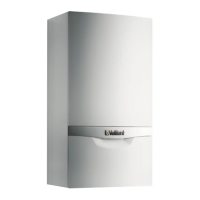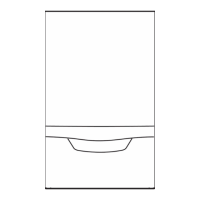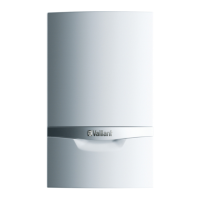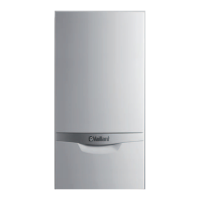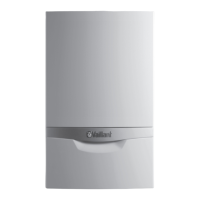0020308118_05 Installation and maintenance instructions 69
Appendix
A Tightening torques
Manufacturer's recommendation for the tightening torques
Component Value Unit
Gas valve assembly, union
nut
40 Nm
15
60
Nm
+
Degrees
Burner, fixing screws 6 Nm
Fan flange, mixture pipe
screws
5.5 Nm
Fan, gas valve assembly
screws
5.5 Nm
Gas valve assembly, test
nipple screw plug
0.9 Nm
Gas isolation valve, test
nipple screw plug
1 Nm
Ignition electrode, fixing
screws
Control electrode, fixing
screws
3 Nm
Pump head, fixing screws 5 Nm
B Inspection and maintenance work
The table below lists the manufacturer requirements with respect to minimum inspection and maintenance intervals. If na-
tional regulations and directives require shorter inspection and maintenance intervals, you should observe these instead of
the intervals listed. Each time inspection and maintenance work is carried out, carry out the required preparatory and com-
pletion work.
Note
The country-specific specification for the maximum CO content has a higher value. With regard to the measured
CO content, first check the country-specific regulations before starting any measures.
As part of a combustion check that is carried out, (→ Section 9.13.4) a CO content of > 350 ppm undiluted is determined.
▶ Check the permissible total pipe length as well as the diameter of the air/flue system in accordance with the enclosed
valid set-up instructions for air/flue systems.
▶ Check whether the air/flue system has been installed correctly.
▶ Check whether the air/flue system is blocked and/or damaged.
The check was not completed with the result that the determined CO content is > 350 ppm.
▶ Replace the control electrode. (→ Section 13.7.14)
The control electrode has been replaced and the CO content is still > 350 ppm.
▶ Check the combustion chamber. (→ Section 12.8.2)
The combustion chamber has been inspected and the CO content is still > 350 ppm.
▶ Contact customer service.
# Maintenance work Interval
1 Record all of the analysis results in the Benchmark Checklist in these
instructions
Annually
2 Ask the end user whether any significant problems occur when operating
the product
Annually
3 Use the diagnostics system to check the product's fault history Annually
4 Visually inspect whether the air/flue pipe and its opening have been in-
stalled correctly in accordance with the set-up instructions
Annually
5 Check that the unit has been installed correctly and the connections have
been secured
Annually
